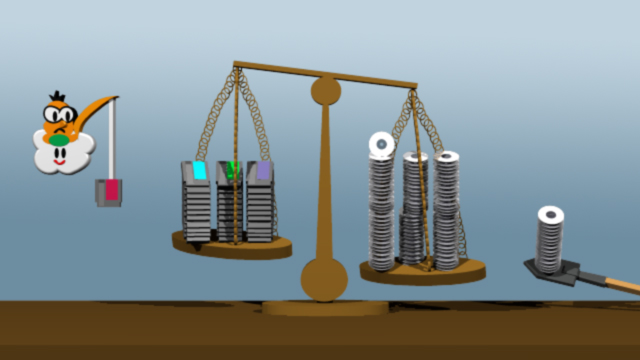
The main reason I bought my Wii in 2006 was for Nintendo’s first- and second-party games. I knew the graphical capabilities and other specifications of the system were not on the same level as the Xbox 360 or PlayStation 3, but that didn’t matter to me. What mattered was Nintendo’s exclusive stable of AAA intellectual properties, and that was enough to warrant the purchase of Nintendo’s next-generation offering. Now, I imagine this to be true of many gamers, who were yet to experience (or be bothered about) motion control in games. Many of us saw the advent of motion control as an interesting idea that might have applications in everything from first-person shooters to golf simulations, whilst still giving us the choice of forgoing this new control method. Little did we know the massive impact it would have for Nintendo and the video game industry as a whole, eventually turning Wii into a magnet for shovelware.
Within a couple of years every established and fledgling developer made games using this new control method or at least implementing it into their games, with Nintendo sitting back and watching the royalties from said game sales roll in– with little care for just what was being released on their new system. Worldwide pandemics of motion control fever broke out and developers happily released inferior Wii Sports clones to an unsuspecting public. Nintendo more than obliged, playing up to Wii’s “family friendly” tag (see Nintendo’s embarrassing 2008 E3 presser) which actively courted the casual market. Before we knew it, disgruntled “core” gamers, developers and journalists all complained about the overall quality of Wii games that were out there. Sure, you can go down to your local games store and still find a handful of great games buried between titles like Petz Sports, Ninjabread Man, and the imaginatively titled Game Party, but we already owned many of these rare quality games. Worse, they were developed by Nintendo itself, with the bleak horizon before us showing no signs of light.
But the odd Wii-exclusive third-party game got me thinking: should Nintendo games be the only reason I buy Nintendo hardware? Things were not like this in the SNES days, and indeed Nintendo was even more stringent during the days of NES, considering that first console had to be carefully marketed following the video game crash of the early 1980s. Oversaturation of consoles and games in the late ’70s and early ’80s led to the overall quality of software falling, with many developers and console manufacturers only after a quick buck. The most (in)famous example of this is Atari’s E.T. The Extra Terrestrial, which had a six week development cycle in order to meet the Christmas sales rush. Needless to say the game is widely acknowledged as one of the worst of all time and was a terminal wound that the industry could not recover from.
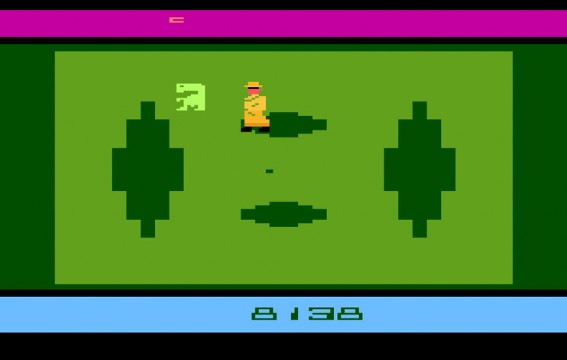
Four holes, E.T. and Dick Tracy– now that’s imagination
When Nintendo launched the NES in 1985, many retailers were reluctant to stock the system for fear of it being a huge flop. Instead of calling games “cartridges” and consoles “video game systems”, Nintendo offered alternatives such as “Game Pak,” packing in good old R.O.B to reduce the perception of the console as a “toy.” History tells us that after a regional and then national rollout NES went on to be one of the most loved and iconic pieces of hardware ever conceived by any company, not just in the video game world. NES re-ignited the fire that had been extinguished in America by oversaturation and Nintendo put strict measures in place to make sure it would not happen again.
In an effort to make sure the video game crash of 1983 did not repeat itself, Nintendo put regulations in place for third party developers and publishers, whilst also implementing a “key and lock” feature in the NES console and cartridges respectively to ensure games could not be reverse-engineered and ported to rival systems. Nintendo knew that games make or break a system and the NES was carefully handled in this respect. Nintendo limited third-party publishers to only five releases per year and forced them to pay for the Nintendo manufactured cartridges in full before release, so all liability for failure would be at the feet of the publisher themselves. These strict rules helped shape the NES into one of the most successful and highly regarded consoles of all time, with Nintendo virtually monopolising the video game market in the process.
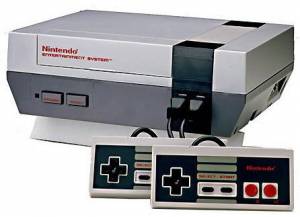
Manufactured greatness and draconian regulations all for a little grey box.
When the SNES was released, Nintendo could no longer count on console exclusivity as many games received cross-platform publishing, especially with Sega’s entry into the console market. This increased competition (and one of the most famous console wars in video game history) brought about an influx of amazing games. Revamped franchises like Final Fantasy and The Legend of Zelda hit their stride on SNES, with new console experiences (Street Fighter II, Chrono Trigger,F-Zero and Super Mario Kart to name but a few) bringing the overall quality of games into the stratosphere. Indeed, SNES is often cited as having one of the best ratios of quality, per game, of any system ever released, and all this in a period of just five or six years after the release of NES.
All the success Nintendo had with the NES and SNES only seemed to reinforce their “our way or GTFO” philosophy which had brought them so much success (though maybe not too many friends) in the past. Unfortunately, developers were growing tired of the strict measures Nintendo enforced and their perceived stubbornness in the way they went about business. This culminated in the heavy loss of third party support for their next home console: the Nintendo 64. The days of hundreds of quality games on a Nintendo system were soon to be long forgotten as many of the franchises and developers that were traditionally associated with Nintendo consoles turned their backs on the Big N in favour of the more welcoming arms of Sony and the PlayStation. Yet Nintendo decided to stubbornly stick by the nearly extinct cartridge format. Fears about loading times and piracy (mainly piracy) meant that the format of choice for the rest of the industry was not the format of choice for Nintendo. Nintendo obviously thought third parties would happily jump on board and empty their pockets to produce smaller and more expensive cartridge games. They didn’t.
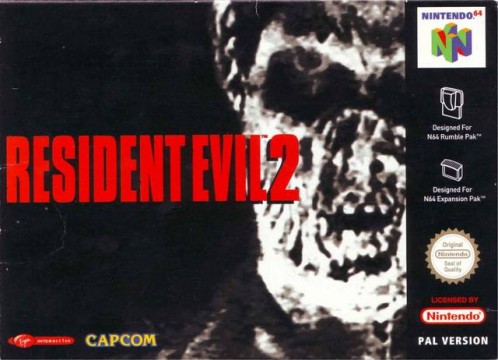
Yes, Resident Evil 2 eventually came out on N64, but by then everyone already had it on PlayStation.
Nintendo made great games for the N64, and a few cult classics were released on the system. But in general, it was massively overlooked (third party-wise) compared with PlayStation, and missed out on some of the biggest games of the era. SquareSoft shifted its focus of the Final Fantasy series (which was traditionally a sure thing for Nintendo) to PlayStation, as did many other developers and publishers who associated with Nintendo consoles, such as Capcom. They went on to create some of the most iconic franchises ever devised. Only 387 games were released for Nintendo’s 64-bit beast compared with over a thousand for PlayStation and 768 for the SNES that came before it. Increased costs for developers and publishers resulted in N64 titles retailing at a higher price than their CD counterparts. All these factors ensured that third-party developers steered well clear of N64, at a time when (arguably) many of them were at their most creative. This was in stark contrast to SNES, which had countless great third-party titles that helped elevate the console to the almost godlike status it holds today in console lore.
Nintendo went from one extreme to the other with no middle ground to establish a foothold, and when GameCube released this trend continued. Now, don’t get me wrong here– Nintendo’s little purple lunchbox was a great console, offering (half-sized) DVD games and packing power that could more than match Sony’s PS2. But by this time, third parties had abandoned Nintendo for the surefire success of the PlayStation brand and the new inroads that could be made on Microsoft’s emerging Xbox. Grand Theft Auto completely overlooked the GameCube as did many other “mature” games, with developers and the general public perceiving the GCN as a child’s toy (the very pre-conception Nintendo wanted to avoid on release of NES).
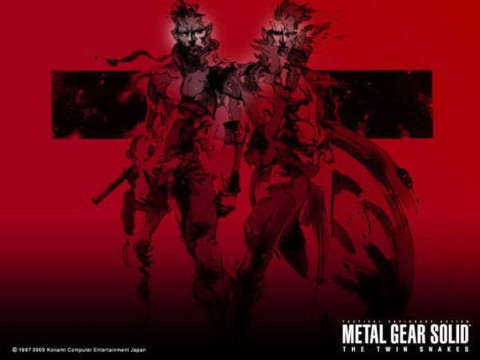
GameCube was a great console– shame it was handled so badly.
Nintendo desperately tried to claw back third-party support and showed great determination in the form of The Capcom Five and Resident Evil 4, which is still one of the greatest games I have ever played. Although the volume of third-party releases did improve over N64 (as it couldn’t really get any worse), support fluctuated, with many companies not diving in wholeheartedly the way they did with Xbox and PS2. The end result was a console that didn’t know what it wanted to be and third parties not knowing who the target audience was, culminating in a third place finish behind both veterans Sony and newcomers Microsoft. GameCube sales did not even surpass that of N64 by the end of its lifecycle.
This brings us nicely back around to the current generation and Wii. Nintendo knew exactly what it wanted from its glossy new console, when it went on sale in 2006. Plenty of games, plenty of support and a new way to play were at the top of the agenda going into the new generation. Nintendo’s newfound life brought about a change in third-party developers, with many returning to jump on the waggle bandwagon to make a good profit from casual gamers. Cheap development costs, a standardized format and a huge demand from the non-gaming public made Wii a sure thing sales-wise for many developers. Nintendo unshackled third parties from its scrupulous requirements of quality, with quantity now taking center stage. The end result? An influx of games (over 1200 and counting), making Wii Nintendo’s first hardware market leader since SNES.
My main gripe (and point of this article) is that this change of direction and indeed power in the industry has resulted in one thing: more shovelware. In fact possibly more than ever before, more than any other console in history. We at Nintendojo often (deservedly) take the complete piss out of titles such as Imagine: Party Horsez 4 and Bratz: The Movie but in all seriousness these games are just as indicative of what Wii is about as Nintendo’s own classics that have been released for the schizophrenic console. For every quality game released there are twenty pieces of shovelware which we would not touch with a barge pole. The ratio of quality to poor games on Wii would hardly be enough to leave any taste in your mouth, let alone a good one, and Nintendo must surely realize this, without ever acknowledging it.
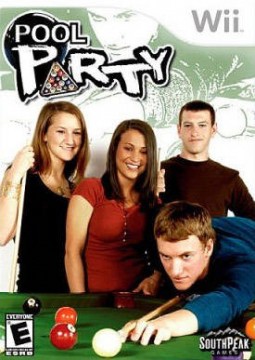
Fancy a game? No, me neither.
Striking a balance between quality games for a core market and casual games for the casual market is something I am yet to see Nintendo succeed in doing. NES and SNES were all-out classics– sure, they had some complete rubbish released for them, but the defining memories of the consoles were their utter brilliance in new, exciting and excellently-designed groundbreaking games. Nintendo lost third-party support with the N64 and the third parties were lost with the GameCube, creating a complete mess of console and game sales alike. You might say “well, N64 had Super Mario 64 and GameCube had Metroid Prime,” only that would be missing my point. Third-party support is what this article is all about and the fluctuation between good solid support, no support and all-out crap has been like a pendulum, swinging from one side to another culminating in Wii’s catalogue of shovelware digging a grave for the soon to be succeeded console.
I truly believe Nintendo can turn it around and bring back core developers who create new and exciting experiences for Wii U. (I don’t count waving a controller to make Mario jump exciting.) But I fear this console may be exactly what the name suggests (and sounds like): Wii 2. Nintendo has the attention of third parties, and has proved to them that it can shift games. If Nintendo can bring back the kind of quality control it had for SNES and NES, whilst retaining the sheer volume of titles on Wii, then Wii U will also be a sure thing. Here’s hoping.




 ShareThis
ShareThis







Preaching to the choir here, buddy. We’ve heard it, trust me, we know. Don’t tell us, tell Nintendo.
Nice history overview, Lewis! You’ve definitely done your homework!
@xeacons, I reckon Nintendo are well aware of the problem. Taking a look back at differing levels of third party support and how Nintendo handled the companies who supported them was a prominent factor in writing this article.
@Stuart, Thanks didn’t want to make the whole thing about Wii.
Very good editorial! Well said! What ticks me off about the Wii is it’s the #1 console of this gen, and it gets terrible 3rd party support. I really hope Nintendo can turns things around with Wii U. By the way, i’m 38 yrs old and i’ve been a Nintendo fan since before they released the NES. I’ve seen it all too! I totally understand the purpose of this editorial.
I personally think Nintendo should get it right with the Wii U. Mostly all 3rd party games suck (except a few like the Conduit series and others) and this new console should do the job because i’m not gonna call my friends and say “hey guys, let’s play chucky cheeses or bratz” and the list goes on and on and on.
@hp3: Thank you, I’m glad you enjoyed it. Very interesting to look back and compare/contrast support Nintendo has received over the years.
@Master: We can only hope